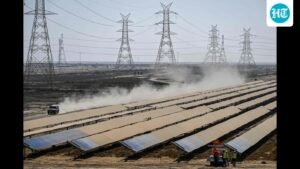
Is India getting hemmed in on all sides? From what is happening around us, it does look like it is. Advertisedly or inadvertently.

For one, the US is still unsure of where it wants India to fit into its world view. This shakeup of India’s relations by the US, the likes of which has not been seen since the sanctions on India after our 1998 nuclear tests, has gone beyond merely pushing India to get a good trade deal. The optimists point out that many important aspects of our bilateral relations are progressing well. Others point out that India has lost its geopolitical relevance for the US, symbolized by the punitive tariffs against India for the purchase of Russian oil in disregard of our national interests. The truth is somewhere in between.
It will be hasty to conclude that India has ceased to matter to the US in the larger geopolitical scheme of things. In the midst of relentless pressure from the US impacting Indian exporters, jobs, students and H-1B visas, the India-US trade deal may well be a eureka moment for both countries. However, juxtaposed against a US-China deal which will reset the two countries’ equation in Asia, India’s concerns are genuine. While there may not have a “Munroe doctrine moment” between the US and China, with each side drawing lines around their spheres of influence, the Chinese side will press for some concrete understanding on the Indo-Pacific given their formidable clout with the US on trade issues like rare earth minerals. With the Trump Administration in no mood to mollycoddle its own allies in the Indo-Pacific, including Japan, South Korea, Australia or even Taiwan, how high will India figure in this US-China equation? Quad may go into hibernation.
That said, it is counterproductive to see every step of the US as aimed at India. But the US can do a lot more to address Indian concerns even while satisfying its domestic constituency. Removing the punitive tariffs on India is a good place to start, especially since there has been a 60% increase in oil purchases from the US this year. This should start offsetting the trade deficit.
The European Union (EU) is, at best, quiet and, at worst, has joined the US in imposing sanctions against India, as it did against Nyara Energy where Russian Rosneft has a substantial minority holding. European nations have struck lopsided trade deals with the US; They had to choose between, on the one hand, preserving their alliance with the US and the so-called liberal order, and, on the other, standing their ground, losing American backing, and facing China on their own. The challenge to their world order is serious since it is coming, for the first time, from within — from the US. In this scenario, the EU, instead of clinching the elusive trade deal with India and strengthening their presence, like the UK has done, is trying to hem India in with their misguided regulations.
Closer home, with China, India has taken steps for an important but symbolic reset at Tianjin. But the tough questions are yet to be answered by China including pending de-escalation at Galwan and encircling India by militarily helping their “iron brother” Pakistan, making inroads in Bangladesh, and enhancing their leverage in Nepal and Maldives. Further, the huge trade deficit, stopping critical minerals, withdrawing their nationals from Indian companies and building their biggest dam on their side of the Brahmaputra next to the Indian border are all indications of their intention. to him in India.
Ironically, the road to tackling the misguided economic policies of the West is through China. With old security templates with China broken, it is time for India to engage in a mutually beneficial manner for Chinese investments to flow into non-security areas in exchange for market access to Indian investments. Nothing creates more pressure on the West than seeing India and China doing business together!
To complicate matters, Saudi Arabia and Pakistan have signed a mutual defense agreement to treat aggression against one as against both. While some analysts say it is aimed at Israel, not India, or that it may not make any meaningful impact since such an understanding was always there, any tacit understanding becoming a written agreement has implications. and it would be a misjudgment to brush it away. Even if India now has the best of bilateral relations with the Gulf countries — one of the achievements of this government — this pact complicates its broader regional relations, especially if the UAE and others join it. And of course, Pakistan got a further boost for its geopolitical rehabilitation when the Pakistan army chief Asim Munir met President Trump — not once but twice after Operation Sindoor. Now the US is selling air-to-air missiles to Pakistan. This comes at a time when the US has withdrawn exemption to India from its sanctions on the Indian-assisted Chabahar port in Iran, shutting the geopolitical door on India to access Afghanistan and Central Asia, something which will only gladden the hearts of Pakistan and China.
As geopolitics and bilateral equations change, India needs to enhance its leverage by actively engaging in processes to resolve global conflicts and challenges, not staying on the margins, and expanding its strategic autonomy, not abandoning it, and undertaking serious reform. Only then can we counter, and transcend, the efforts to hem us in.
TS Tirumurti is a former ambassador and Permanent Representative of India to the United Nations, New York. The views expressed are personal




